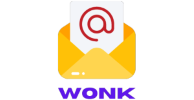Segmentation Secrets - Targeting With Precision in Email Marketing
Segmentation is a powerful marketing strategy for targeting specific groups with personalized messages to increase conversions. Segmentation can be used for email marketing, ad targeting, personalizing websites and more.
Marketers use segmentation for a variety of purposes including prospecting, qualifying and bucketing leads in the sales pipeline, tiering support tickets, and managing upsells, cross-sells and renewals. But to be truly effective, you have to focus on the right segments that meet your overall goals — not just those that might make you more money.
One of the best ways to create targeted emails is by using information from your subscribers’ purchase history. For example, if a customer buys a newborn baby blanket, you can follow up with a recommendation for other gift ideas that might be suitable. You can also utilize behavioral segmentation to send automated notifications or reminders. For example, if someone has items in their cart but haven’t checked out, you can send them a discount offer to encourage them to complete their order.
Demographics are another way to categorize your audience based on characteristics like age, gender, income and education. For example, if you sell women’s clothing, you can send a special promotion to encourage your female customers to shop. In addition to demographics, you can also segment your audience based on the stage of their journey with your brand. For example, if they are new to your newsletter, you can send them content that educates them about the company and its products.
Once you’ve identified the key factors that determine your audience, it’s important to assess the availability of data and how well it will work for precision targeting. For example, it may not be feasible to segment your list based on geographic location if you have limited or inconsistent data collection. Likewise, it’s important to define clear criteria for your segments so that they can be easily shared across tools and teams. For example, you can use the three-adjective rule to create your initial segments: “if you can’t describe the group in three adjectives, it’s too broad.”
Creating targeted emails that are relevant and resonate with your audience is essential to achieving your marketing objectives. With the right data, you can deliver the most valuable communications that will ultimately drive profit. For more tips on leveraging the power of targeted emails, download our free guide: 6 Types of Targeted Email Guaranteed to Bring More Sales.
Free Training
Learn To Grow My Email List
Get Access To A Free 6-Part Video Training
My Recent Posts
All-in-One Sales Automation Platform
Check out my recent post on all-in-one sales and marketing tools and what I think of it.
Sales Funnels
Check out my recent post on sales funnels and what I think about them. Are they still worth it?
One of Tim's earliest internet businesses was buying/building web sites and then “flipping” them for a profit. In 2007 he wrote one of the first, if not the first, ebooks on how to flip web sites and sold the ebook on his domain FlipWebSites.com. A year later he ironically flipped the web site FlipWebSites.com. It was during this time when Tim first started really understanding the importance of an email list.
Tim Phelan
©Copyright 2023 Email Marketing Wonk
1050 Crestview Dr #301
Mountain View, CA 94040


